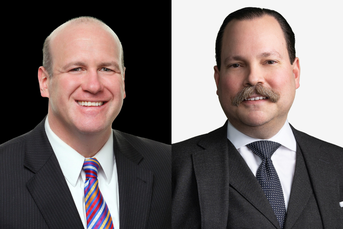Salary gains slow as firms anticipate dip
 1
1
While revenue and profits continued to grow for advisory firms last year, most staffers have seen only limited increases in compensation as the industry braces for tougher times ahead.
The financial advice industry has benefited from robust financial markets for about a decade but company executives are now having to figure out how to preserve those gains.
Revenue and profitability continued to grow within the investment advice industry in 2018, but sluggish staff productivity has kept compensation flat, and firm leaders appear to be preparing for leaner times ahead, a new InvestmentNews study shows.
Financial advice firms are growing, but they’re seeing only marginal increases in productivity. Flat compensation “may indicate a more conservative outlook for the future,” according to the 2019 InvestmentNews Adviser Compensation and Staffing Study, which was completed by InvestmentNews and The Ensemble Practice and sponsored by BNY Mellon Pershing.
“Human capital costs are the largest expense for an advisory firm, and financial management practices demonstrate that an industry that has always managed for reward is beginning to manage against risk,” the study of 300 firms, which is conducted every two years, found in its analysis.
Investment advice firms achieved an 11.1% increase in revenue in 2018, even though assets under management only grew by 2.5%, according to the study. In 2017, revenue grew 11.7% while AUM climbed by 16.8%.
Firms were able to hold expenses to a much slower growth rate than revenue in 2018, resulting in average income of $733,684 per firm owner, up from $623,111 in 2017.
“Firm owners minimized expenses and cashed in on higher income — an indication that owners either believe this is an opportunity to take profits in a growth cycle or that growth is expected to slow. Organizations are building conservatively,” the study said.
Advisers suggested the industry may be growing up.
“Perhaps firms are managing in order to create a more sustainable business,” said Mark Johannessen, principal at Sullivan Bruyette Speros & Blayney. “As the profession matures, firms are becoming more focused on sustainability.”
Also, with so much merger and acquisition activity going on, firms looking to eventually exit will need to be thinking more about profitability, he said.
The study also found that the industry achieved double-digit revenue growth without the assistance of equity markets, a feat that has been difficult in the past and might show that advisory firms are getting better at marketing their services and focusing on improving how efficiently those services are executed, the report said.
Christina Townsend, director of platform strategy at Pershing Advisor Solutions, said the study shows that advisory firms continue to mature while maintaining solid results. They’re gaining business through organic growth, referrals and business development, she said.
‘Good diversification’
“We see good diversification in where this growth is coming from,” Ms. Townsend said.
Firms are increasing their revenue, but not everyone on staff is gaining equally.
The compound annual growth rate in compensation between 2017 and 2019 was 9.1% for firm chief executives. It was 4.5% for lead advisers, 2.2% for practicing partners, 1.8% for client service administrators and 1.5% for service advisers. Pay decreased 1.5% for chief operating officers.
For the most part, advisory firm staffers didn’t share in firms’ prosperity because productivity lagged.
The study found that average revenue per professional was $464,000 and $253,000 per individual staff member in 2018. Those numbers haven’t grown much since 2014, when revenue per professional was $478,000 and revenue per staff was $228,000.
Other than for executive positions, the median salary at advisory firms has grown between 1.8% and 2.5% from 2017 to 2018. That’s slightly below the Social Security cost-of-living adjustments of 2% and 2.8% for the same period.
“That ties back to firms being more careful with their spending,” said James Gallardo, research associate for InvestmentNews.
Putting a tighter lid on pay is one way to manage against risk.
“It’s being very smart about how they compensate their staff,” Mr. Gallardo said.
That means, in part, making compensation reflect what firms are getting in return from their employees rather than rewarding them for longevity.
[More: The 2019 InvestmentNews Adviser Compensation & Staffing Study]
“Just because a year passes, it doesn’t mean we should pay more,” said Brandon Odell, a partner and director of business consulting at The Ensemble Group.
Many firms added junior advisers in 2017, and those individuals may still be on the steep side of the learning curve, Mr. Gallardo said.
Importance of staff management
“It could take time for them to grow up and bring in more revenue,” he said.
The study pointed to a variety of reasons why executive pay is growing rapidly while other jobs lag behind.
“Perhaps the value of some positions is being reconsidered, and compensation is reaching a ceiling, or perhaps controlled compensation gains are reflective of a conservative view of near-term growth for the industry,” the study states.
But reining in compensation doesn’t mean firms are neglecting their people or staff development. In fact, staff management is becoming more important than ever because of a shortage of advisers.
“[F]irms are using career tracks, training programs and incentive compensation plans to drive human capital performance,” the study states.
An example of an advisory career track is to start a new staffer as a support adviser. She then would move on to become a service adviser, a lead adviser and then a practicing partner. Each step requires developing a new set of skills.
At Addessi Financial Partners, a financial planning firm with an independent broker-dealer, the firm’s only lead adviser is its owner, Michael V. Addessi. But the firm has implemented a formal career path that progresses from paraplanner to level 3 adviser to level 2 adviser, the stage at which the professional begins taking calls from clients and developing client relationships.
up the ladder
The owner’s son, Michael O. Addessi, is an associate adviser. He started out as an hourly employee and has been working his way up the ladder. With each step up, he has noticed an improvement in his ability to answer client questions, respond to their concerns and manage their expectations.
“When I’m sitting in meetings, I feel more confident talking to clients,” Michael O. Addessi said. “Clients can feel it, too.”
The ladder helps with retention at the firm, which has about 300 clients. “The idea is to motivate people and give them something to strive for,” he said.
The industry is finding it harder and harder to identify a lead adviser to hire, Mr. Odell said. That is spurring firms to ask: “If we can’t buy it, can we build it?”
“There’s this movement we’re seeing to grow your own lead adviser,” he said. “That means hire someone earlier in their career and develop them into a lead adviser.”
The number of advisory shops that use career tracks varies by their size. They’re found in about 82% of the largest firms, known as super ensembles; 65% of enterprise firms; 58% of ensembles and 30% of solo practitioners.
Another important step is setting appropriate goals and performance metrics.
“That should directly correlate to your compensation — whether it’s salary or incentive compensation,” Ms. Townsend said.
Firms know the focus on human resources will pay off on the bottom line.
“If they have a team in place that can create organic growth, they’ll be better positioned for long-term success,” Mr. Gallardo said.
Learn more about reprints and licensing for this article.








